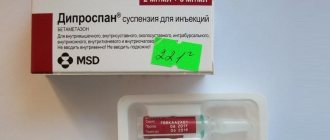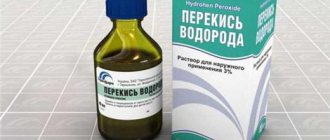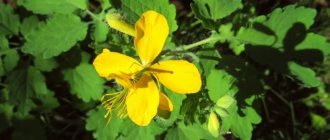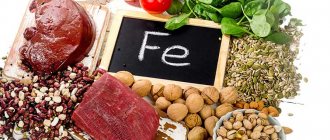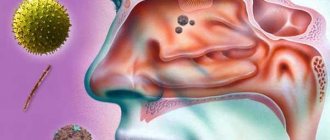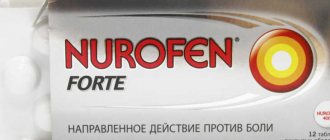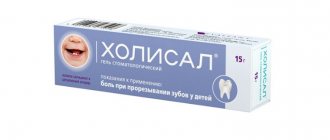A little history
Calendula was used as a medicinal plant by ancient Greek healers. Its scope of application is non-healing wounds, furunculosis, cancerous tumors, stomach ulcers. In Ancient Rome, healers also resorted to the help of a beautiful flower, and Roman scammers even tried to pass off the orange petals as an expensive spice - saffron.
The healing properties of calendula were described by the famous Avicenna in the 11th century. In his treatise, he noted that preparations from the flower are effective against poisoning and snake bites. In addition, he recommended the juice obtained from plant raw materials to women with a delay in menstruation.
The plant’s glorious medical “career” continued into the Middle Ages. Crushed leaves and inflorescences were used to get rid of warts and corns, and orally for the treatment of various forms of cancer. In addition, European alchemists were convinced that orange flowers accumulate solar energy. The raw materials were collected in the midday heat, placed in containers, placed under the sun, and after a couple of days they received a wound healing agent.
In the 19th century, the study of the healing properties of the plant continued. French pharmacologists have described about five preparations from calendula that have shown effectiveness in the fight against cancer. In Russia, scientists noted that traditional healers used the herb for severe vomiting, heart pain, gynecological and venereal diseases.
Today, medicinal products made from the plant are officially registered with pharmacological associations in many countries around the world. Medicinal marigolds smoothly moved from healers' shops to pharmacies.
Decoction of calendula and chamomile flowers
One of the most effective home remedies, which has a powerful effect on inflammatory processes, is a composition prepared based on chamomile flowers and marigolds. There won’t be any particular difficulties with preparation - brew 45 grams. vegetable raw materials (take components in equal quantities) 300 ml of boiling water.
Article for you:
The benefits of cedar decoction: recipes for preparation and treatment
Use the product for inflammatory processes and throat diseases, 50 ml every three hours. It is prohibited to add sweet ingredients - drink the composition in its pure form.
It is also recommended to use the composition for inflammation of the skin, rashes, and cracks. Wipe the dermis 4-6 times daily.
Calendula officinalis - botanical description of the plant
Photo: https://pixabay.com/photos/marigold-gardening-4496017/
Calendula (Calendula officinalis L.), popularly called “marigolds,” is classified by botanists as belonging to the Astrov family. In total, there are about 20 types of grass, many of them have been successfully cultivated for a long time and are actively used for decorative, cosmetic and medicinal purposes.
Marigold is a herbaceous annual plant about half a meter high. It has a distinct specific odor. It has a taproot system, the stem is straight, branched, and covered with small hairs.
The leaves are alternate, light green in color, and also covered with hairs. The lower leaves are ovoid in shape, planted on petioles, the upper ones are elongated, pointed, and sit on the stem. The flowers are yellow or orange, grouped in medium-sized baskets.
Calendula officinalis blooms for a long time and abundantly - from the end of spring until the first frosts in September. The fruits - achenes shaped like a sickle or an arc - begin to ripen in mid-summer. The seeds are quite small and light.
The natural habitat of the flower is the Mediterranean, countries of Southern Europe, and the Middle East. Calendula is grown for decorative purposes in almost all countries of the world. As a medicinal plant, marigolds are cultivated in most European countries, the USA, Central Asia, the republics of the former USSR, and Russia.
Calendula in the treatment of cats
For the treatment of cats (inflammations, minor damage to the skin, eye diseases), it is also recommended to treat them with a calendula remedy. The decoction is used to wipe the affected areas, wash the eyes, and in case of serious problems, apply lotions. Step by step recipe:
- Rub the flowers of the plant with your hands (20 g).
- Fill with water and place on the stove.
- Boil and remove immediately.
- Close the container and wrap it in a towel.
- After infusion (after half an hour), strain.
- Carry out procedures every three hours.
Compound
The widest range of healing properties of marigolds is due to the elements they contain. Kalenden plays a leading role among them. In addition to it, the plant contains various acids, as well as resinous substances. The specific smell is due to the presence of essential oil in the composition, and carotene is responsible for the yellow-orange hue of the flowers.
The biochemical composition varies depending on the part of the flower. Thus, the smallest amount of useful elements is contained in the roots, which is why they are not used for medicinal purposes. Calendula flowers boast the richest composition.
The content of useful substances is presented in more detail in the table.
Photo: https://pixabay.com/photos/marigold-calendula-blossom-bloom-2827292/
| Nutrient | Quantity in product per 100 g (in mg) | Daily value, in mg | Percentage of normal |
Essential elements | |||
| Squirrels | 300 | 93 | 0.3% |
| Fats | 0 | 68 | ~ |
| Carbohydrates | 700 | 141 | 0.5% |
| Alimentary fiber | 0 | 20 | ~ |
| Water | 0 | 2739 | ~ |
Vitamins | |||
| Vitamin A | 0 | 900 | ~ |
| beta carotene | 0 | 5 | ~ |
| Vitamin B1 | 0 | 1.5 | ~ |
| Vitamin B2 | 0 | 1.8 | ~ |
| Vitamin B4 | 0 | 500 | ~ |
| Vitamin B5 | 0 | 5 | ~ |
| Vitamin B6 | 0 | 2 | ~ |
| Vitamin B9 | 0 | 0,4 | ~ |
| Vitamin B12 | 0 | 0,003 | ~ |
| Vitamin C | 0 | 90 | ~ |
| Vitamin D | 0 | 0,01 | ~ |
| Vitamin E | 0 | 15 | ~ |
| Vitamin H | 0 | 0,05 | ~ |
| Vitamin K | 0 | 0,12 | ~ |
| Vitamin PP | 0 | 20 | ~ |
Micro- and macroelements | |||
| Potassium | 0 | 2500 | ~ |
| Calcium | 0 | 1000 | ~ |
| Silicon | 0 | 30 | ~ |
| Magnesium | 0 | 400 | ~ |
| Sodium | 0 | 1300 | ~ |
| Sulfur | 0 | 1000 | ~ |
| Phosphorus | 0 | 800 | ~ |
| Chlorine | 0 | 2300 | ~ |
| Iron | 0 | 18 | ~ |
| Iodine | 0 | 0,15 | ~ |
| Cobalt | 0 | 0,01 | ~ |
| Manganese | 0 | 2 | ~ |
| Copper | 0 | 0,1 | ~ |
| Molybdenum | 0 | 0, 07 | ~ |
| Selenium | 0 | 0,055 | ~ |
| Fluorine | 0 | 0,4 | ~ |
| Chromium | 0 | 0,05 | ~ |
| Zinc | 0 | 12 | ~ |
Fatty acid | |||
| Saturated fatty acids | 0 | max 22500 | ~ |
| Monounsaturated fatty acids | 0 | min 20300 | ~ |
| Polyunsaturated fatty acids | 0 | from 13500 to 24800 | ~ |
| Omega-3 fatty acids | 0 | from 1100 to 4500 | ~ |
| Omega-6 fatty acids | 0 | from 5600 to 20300 | ~ |
Application
Let's talk in more detail about the use of medicinal calendula. Here are the recipes for medicines.
Calendula decoction
Calendula decoction What does calendula decoction help with?
The medicine is used to eliminate pain in the gastrointestinal tract and during menstruation, to treat diseases of the gallbladder and liver, proctitis, and hemorrhoids. A decoction of the plant helps with colds and flu, relieves anxiety and insomnia. Ingredients :
- Calendula inflorescences - 2 tablespoons.
- Hot boiled water - 200 ml.
How to cook : Place dried calendula flowers in a saucepan with a thick bottom and fill with hot boiled water. Place in a water bath and heat for 15 minutes. Cool the broth for an hour. Before use, strain and bring the volume to the original volume by adding cold boiled water.
How to use : Take 2 tablespoons orally 2-3 times a day before meals. The decoction is also used in the form of enemas - 1 teaspoon per ¼ glass of water. In gynecology, a tampon is moistened in the decoction and inserted into the vagina overnight.
Alcohol tincture of calendula
What does calendula tincture help with? Alcohol tincture is a more concentrated preparation compared to a decoction. It has high antibacterial and anti-inflammatory effects. It is used internally for colds and flu, as well as externally for disinfection and healing of wounds and burns. Calendula helps against allergies.
Ingredients:
- Dry calendula inflorescences - 250 g.
- Vodka - 100 ml.
How to prepare : Pour dry raw materials into a glass jar or bottle, fill with vodka. Infuse the medicine for 2 weeks in a dark and dry place.
How to use : Take 20-30 drops orally 2-3 times a day. For external use, make compresses with calendula tincture. Read more about the benefits of calendula tincture in this article. You may also be interested in learning about calamus and calendula tincture.
Calendula tincture photo:
Calendula tincture sold in a pharmacy
Calendula ointment
Ointment with calendula has bactericidal, anti-inflammatory and wound healing effects. Use ointment to accelerate the healing of wounds, cracks and deep cuts. The medicine helps with infectious skin diseases and allergies, protects against the harmful effects of aggressive sunlight and frost.
Ingredients:
- Dried calendula flowers - 100 g.
- Rendered lard - 200 g.
How to prepare : Grind the dried flowers to a powder and mix with melted lard. Place the mixture in a water bath and heat until smooth. Cool and pour into a glass jar and place in the refrigerator.
How to use : Apply a small amount of ointment to problem areas of the skin and rub in lightly. Repeat the procedure 2-3 times a day.
Read more about calendula ointment in this article.
The healing properties of calendula
The benefits of calendula for humans are difficult to overestimate, and it’s all about the rich biochemical composition. But the orange flower is most valued for its pronounced bactericidal effect. It consists of disinfecting wound surfaces and combating pathogens.
In addition, the healing properties of calendula are as follows:
- fight against viruses;
- relieving inflammation;
- strengthening the body;
- improvement of the functioning of the biliary apparatus;
- relieving spasms;
- healing of wounds and ulcers;
- antiseptic;
- sedative effect;
- decreased sensitivity to allergens;
- improved expectoration;
- temperature drop;
- analgesic effect;
- improving the functioning of the urinary tract;
- decreased blood pressure;
- increasing the body's defenses;
- astringent effect;
- antiemetic effect.
Decoction of calendula and St. John's wort
St. John's wort, which has no fewer useful characteristics, will help increase the effectiveness of marigold products. Preparation:
- Grind dried plant flowers (15 grams each) with your hands; if fresh raw materials are used, chop with a sharp knife.
- Boil water, pour in herbal paste.
- Leave to brew (3 hours is enough)
Take against heart diseases, to increase the body's immune forces, and for colds accompanied by inflammation. Dosage for adults – 50 ml, consume three times a day.
Health Benefits of Calendula
Marigold flowers are widely used in folk and official medicine due to their wide spectrum of action. The plant can benefit every family member - women, men, and children. But in each case, it is necessary to consult a doctor, strictly follow the instructions and have a reasonable approach to the treatment of diseases.
For men
For the stronger half of humanity, drugs containing calendula are indicated for deterioration of erectile function and other potency disorders. In addition, marigolds infused with alcohol help cope with prostate adenoma. This medicine reduces the inflammatory process, demonstrates a bactericidal effect, and improves urination.
If we talk about the external use of calendula infusions and decoctions, then it is indicated for the fight against baldness. Of course, as part of a comprehensive treatment.
For women
The main area of application of the orange flower for women is considered to be the fight against gynecological diseases. Preparations based on this plant are effective for diseases and conditions such as:
- endometriosis;
- candidiasis;
- menstrual pain;
- fibroids;
- myometrial tumor.
Photo: https://pixabay.com/photos/bed-sleep-girl-white-tired-pillow-945881/ In addition, during menopause, calendula preparations can cope with increasing dryness of the genitals.
Regular use of the decoction orally and douching are good preventive measures aimed at preventing inflammatory processes. During pregnancy and lactation, the issue of taking calendula should be discussed with your doctor. In folk medicine, the use of products based on this herb is allowed during these periods, but only if they do not contain alcohol. Infusions and decoctions help boost immunity and cope with respiratory diseases.
Women want to look beautiful at any age and in any position. And calendula can help them with this. Based on it, a variety of skin care products are prepared - ointments, creams, tonics. They cleanse the dermis, heal small wounds, disinfect, and get rid of pigmentation.
Such products are especially beneficial for girls and women with high activity of the sebaceous glands, manifested by acne, an oily sheen, and frequent inflammatory processes.
For children
The beneficial properties of calendula have also found their application in pediatric practice. Externally, drugs are used from a very early age. So, newborns can be bathed in baths with the addition of marigold infusion. Such procedures allow you to get rid of diaper rash, prickly heat, moisturize the skin, and calm the child’s nervous system.
Calendula oil extract has found application in the treatment of:
- small scratches;
- jam;
- acne and rashes;
- hyperthermia;
- blisters from insect bites;
- allergic rash.
Another way to use oil is for low muscle tone. Experts perform massages with this drug literally from the very birth of the baby.
The issue of oral use of calendula decoctions in childhood should be discussed with a pediatrician. You can rinse the neck with a healing solution, but only if the child has already been trained in this procedure and will not swallow the infusion.
Calendula: beneficial properties for women
The unique set of healing capabilities that calendula has has made this plant an indispensable component of procedures for healing the female body.
And it turns out to be especially relevant when eliminating gynecological problems.
Based on calendula, medicines are prepared for the treatment of tumors and ovarian cysts, fibroids and erosions of the cervix, as well as lumps and tumor processes in the breast. In addition, the use of medicines from marigolds helps reduce the tone of the uterus, normalize the course and frequency of menstruation and improve the well-being of women during menopause.
Dosage forms (prescriptions)
As we have already noted, most of the beneficial substances are concentrated in calendula flowers. They are used to prepare medicinal compositions - tinctures, decoctions, infusions, creams and other medications.
Decoction
Photo: https://pixabay.com/photos/tea-herbal-tea-drink-hot-useful-3833600/
This remedy is used in folk medicine to prevent the formation of blood clots in blood vessels, to treat hypertension, atherosclerosis. Also among the indications are diseases of the gastrointestinal tract.
To prepare the decoction, you need to adhere to the following algorithm.
- Pour 10 grams of dried flowers into an enamel bowl.
- Add half a liter of boiled water.
- Place on low heat and simmer for 15 minutes.
- Leave covered for 30 minutes.
- We filter.
The dosage is determined individually, but usually take 100 milliliters three times a day before meals.
Infusion
A water infusion of calendula is prepared using a similar principle, only it is more concentrated. Take 10 grams of dried petals, pour half a glass of boiled water, place everything in a thermos. And let it sit for two hours.
We filter the finished infusion and take it as directed. This can be a treatment for gastritis and other gastrointestinal diseases. In addition, natural medicine is used for inhalation procedures, rinsing, lotions and applications.
Alcohol tincture
The finished medicine can be purchased at the pharmacy. But if you want to prepare your own healing potion, then you will need dried calendula flowers and rubbing alcohol.
The manufacturing process of the drug is quite simple.
- Place 20 grams of inflorescences in a glass jar.
- Pour in 200 ml of medical alcohol.
- Place in a dark place for several days.
- Afterwards we filter and use as directed.
As for the indications for use of the product, there are a lot of them.
As an external preparation, the tincture is used to get rid of various rashes and ulcers on the skin, acne, boils, and to disinfect wounds and abrasions. For oral administration, the tincture is diluted with water in a certain ratio. The drug is used to improve the functioning of the digestive organs and liver. Alcohol tincture of calendula is also indicated for women during menopause.
Essential oil
Photo: https://pixabay.com/photos/tea-herbal-tea-drink-hot-useful-3833600/ Again, oil extract from calendula flowers can be purchased at almost any pharmacy.
But if you wish, you can prepare it yourself using fresh or dried inflorescences. The algorithm for obtaining a healing drug is as follows.
- Take a small glass jar.
- Fill it 1/3 with flower petals.
- Pour in vegetable oil - from sunflower and olive - so that it completely covers the raw materials.
- Leave in the dark for 7-10 days.
- We filter the composition and use it for its intended purpose.
The medicinal composition is used externally for various skin problems - eczematous lesions, bruises, psoriasis. In addition, this product can be successfully used in cosmetology to preserve the beauty of the face and hair.
Briefly about the composition
This unpretentious annual has earned love all over the world. Grown in Europe, Asia and Australia, preferring temperate climates. Bright yellow or orange baskets of inflorescences are pleasing to the eye in flower beds, vegetable gardens and flower beds and are used in folk and traditional medicine.
A variety of dosage forms and cosmetics are prepared from marigolds:
- infusion;
- decoction;
- ointment;
- tincture;
- oil.
The plant owes its wide range of uses to its rich chemical composition. Inflorescence baskets contain:
- ascorbic acid;
- carotenoids;
- essential oil;
- tannins;
- organic acids;
- resins;
- triterpene glycosides;
- bitterness.
Indications for use
Since marigolds have many beneficial properties, their scope of application is extremely wide. Medicines from the plant (both pharmaceutical and home-made) are used to treat diseases and conditions such as:
- ulcers of the stomach and duodenum;
- liver pathologies;
- inflammation of the stomach;
- cholecystitis;
- jaundice;
- colitis;
- inflammation of hemorrhoids;
- furunculosis;
- acne;
- eczema;
- wounds with inflammation, pus, burns;
- gangrene;
- baldness;
- cystitis;
- nephritis;
- candidiasis;
- trichomoniasis;
- erosion of the uterus;
- myoma and fibromyoma;
- inflammation of the bronchi;
- asthma;
- angina;
- inflammation of the pharynx;
- dizziness;
- high blood pressure;
- arrhythmia;
- stomatitis;
- periodontal disease;
- bleeding from the gums.
And this is not the whole range of applications. After all, each dosage form has its own indications. In order not to harm yourself and speed up the healing process, you should consult a doctor before using calendula.
Composition and effects on the body
The term extract means "extract from a plant", which can be aqueous or alcoholic. The alcoholic one is called a tincture, the aqueous one is called a decoction.
Azarium flowers (the plant's Latin name) are rich in chemical compounds of various categories:
- Natural alcohols - phytosterols, which have the ability to accelerate metabolism in the body (and therefore restore damaged tissues).
- Plant dyes - carotenoids, which give flowers the properties of antiseptics and initiators of regeneration.
- Triterpene glycosides, which give the ability to be antiseptics and healing substances.
- Flavonoids are detoxifying substances that also have choleretic, antispasmodic properties and remove excess fluid from the body.
- Essential oils that serve as natural antibiotics for the body.
- Compounds of selenium, magnesium, copper, molybdenum, manganese, zinc.
- Tocopherols.
- Coumarins.
- Substances with tanning properties.
- Bitterness.
This complex allows the plant to have the following effects on the body:
- Disinfectant.
- Tanning and tonic.
- Regenerating-healing.
- Antitoxic.
- Relaxing-spasmolytic.
- Sedative.
- Providing proper metabolism activity.
The last item on the list means that the extract from the plant’s flowers revitalizes blood and lymph circulation, the degree of mobility of digestive juices, and accelerates the body’s production and secretion of mucus and other biological fluids.
Therefore, to the question of what does calendula tincture help with, the answer suggests itself: everything.
Indications for the use of alcohol tincture of calendula are a variety of cases of diseases and unusual conditions of the body - from stomatitis and pain due to inflammation of the gums to taking marigold tincture during menopause.
The use of marigold drink during pregnancy has a beneficial stabilizing effect on the body.
The use of calendula tincture in gynecology is justified by its powerful anti-inflammatory and healing effects on the body, while calendula tincture for chickenpox in children allows one to achieve an antitoxic, antipyretic and general tonic effect.
The use of calendula tincture for toothache can have a sedative, analgesic effect on the body; a similar effect can be achieved by taking a calendula drink for otitis media.
In addition to the possibility of instilling calendula tincture into the ear (as well as into the eyes for vision - tinctures of calamus and calendula), the drug is widely applicable for treating other cavities of the body (a drink made from calendula is good for rinsing, douching, washing to clean purulent cavities, wounds, erosions).
Improving the health and appearance of the skin is one of the oldest methods of using this dosage form from the flowers of the plant. Their range is unusually large - from using calendula tincture for mosquito bites (the most primitive recipe for using) to using calendula tincture for blackheads (blackheads).
In addition to treating the surface of the body and natural cavities of the body, it is also allowed to take calendula tincture orally. Since it has an antispasmodic and sedative effect, taking calendula tincture for blood pressure is one of the methods for treating arterial hypertension.
For the treatment of other diseases and conditions of the body caused by hypertonicity (excessive tension) of smooth muscles (transient or chronic), the use of liqueur from Azarium flowers can also be recommended.
Considering that the walls of the intestines, urinary and gall bladders, myocardium, ductal glands, and uterus are composed of smooth muscles, preparations of Azarium flowers can effectively help:
- For biliary dyskinesia.
- Intestinal spasms.
- Chronic angina attacks.
- Spasms of the cerebral arteries.
- Dysfunction of the ovaries and uterus.
- Erectile dysfunction.
However, one should not hope that the body will receive help from taking one (albeit well-proven) herbal remedy. It is impossible to predict all possible reactions of the body to taking a drug from the flowers of this plant.
Possible:
- Development of a severe allergic reaction when taking.
- Displacement of a stone from the gallbladder with blockage of the lumen of the duct.
- Inappropriate activation of the heart muscle.
- Intestinal reaction in the form of profuse diarrhea.
Only a doctor who is well aware of the health status of his patient can take into account all the possible consequences for the body from the use of a seemingly harmless medicine. Therefore, all attempts to independently use calendula alcohol tincture should be nipped in the bud.
Methods of using calendula in folk medicine
As we have seen, marigolds can help you cope with many ailments, but only if you use products based on this plant correctly. We offer several popular folk recipes that have demonstrated their effectiveness.
For hypertension
The use of preparations from marigolds is rational only at the initial stage of the disease and as an adjuvant. In all other cases, herbal medicine will be powerless, and refusal to take medications can lead to negative consequences.
To treat hypertension, calendula tincture in alcohol is used (its recipe is described above). A single dose of the drug is 30 drops, the frequency of administration is 3 times a day. The tincture is mixed with warm water and consumed 30 minutes before meals. The duration of treatment is about a month, then they take a week’s break and resume therapy.
For sore throat and sore throat
To get rid of painful sensations in the throat due to sore throat, laryngitis and pharyngitis, you need to prepare a water infusion of calendula. It is used to gargle 2-4 times a day. Mandatory - after every meal.
A herbal mixture consisting of marigolds and plantain grass is also effective against sore throats. To prepare it, take 2 tbsp. spoons of each plant and pour half a liter of boiled water. After a few hours, the infusion is ready, it is used in the same way as the first remedy.
For gastritis
Calendula helps reduce discomfort due to stomach inflammation. To treat gastritis, the plant is mixed with other medicinal herbs.
- Take 1 tbsp. spoon of calendula, chamomile, yarrow and pour 300 ml of boiling water. We insist throughout the night. By morning the medicine is ready for use.
- Take 1 tbsp. a spoonful of calendula, horsetail, fennel, plantain roots and licorice. Pour half a liter of boiled water and leave for several hours.
- Prepare a decoction of calendula and oats. To do this, first brew 20 grams of marigolds with 200 ml of boiling water, put on low heat for a quarter of an hour. Then strain and add 2 tbsp. spoons of ground oatmeal. You can add honey to this composition and eat it for breakfast.
For candidiasis
As in other cases, calendula for thrush is used only as an additional remedy. This plant is effective, but not omnipotent!
To prepare an infusion for washing and douching, you must follow these steps.
- Pour 20 grams of dried calendula flowers into a container.
- Add 1000 ml of boiled water.
- Leave to infuse for 60 minutes.
- Filter and wait until it cools completely.
If thrush is detected, wash off with the product three times a day. You can douche no more than 2 times a day, but only on the recommendation of your doctor.
For bronchial asthma
Photo: https://pixabay.com/photos/disease-the-common-cold-flu-4392162/
As an aid, you can use a decoction prepared from several products. We will need 30 grams of yarrow, 20 grams of hawthorn berries, 10 grams of marigolds, and nettle leaves.
The preparation is very simple - pour 3 tbsp. spoons of herbal mixture with half a liter of boiled water, put on low heat for a quarter of an hour, then leave for 45 minutes, filter. Take the composition 1/3 cup four times a day after meals.
For fungal diseases
To get rid of ringworm, you need to prepare an infusion according to the classic recipe. The treatment procedure itself is as follows: make a gauze bandage, soak it in the cooled infusion and apply it to the affected areas. We repeat the procedures until complete recovery.
For acne
Prepare an alcohol tincture according to the recipe described above. The resulting homemade “lotion” is used for applications and rubbing of the facial skin. You just have to remember that the alcohol contained in the product often causes skin irritation in sensitive women.
If such symptoms occur, refuse this drug and switch to a water infusion of calendula.
Contraindications and precautions
Calendula does not go well with all herbs. When preparing homemade preparations, you should avoid simultaneously brewing it with plants that have a sedative and hypotensive effect, such as:
- valerian;
- hop;
- wheatgrass;
- stinging nettle;
- shepherd's purse;
- hop;
- Siberian ginseng.
Calendula should also not be used simultaneously with synthetic sedatives and antidepressants.
In addition, it is necessary to refrain from taking marigold-based medications if you have been diagnosed with at least one of these conditions:
- bradycardia;
- hypotension;
- bronchial asthma;
- pregnancy and breastfeeding;
- tendency to allergic reactions;
- heart failure.
There are no special restrictions for external use, except for a skin reaction in the form of irritation or urticaria, in which case treatment should be discontinued.
Calendula officinalis in cosmetology
Marigolds are very often included in cosmetic preparations - all kinds of tonics, creams, scrubs, ointments, lotions, rinses. How to maintain beauty with calendula? We offer several effective remedies.
Hand mask
To prepare this cosmetic product you need to take:
- 2 tbsp. spoons of oatmeal;
- 2 teaspoons lemon juice;
- 1 teaspoon marigolds;
- 20 grams of honey;
- 50 ml warm water.
All components are mixed in a blender. Apply to clean skin of hands, wait 7 minutes, rinse with warm water. If the skin is too dry, you can additionally apply a rich cream to it.
Wax balm
Photo: https://pixabay.com/photos/oil-calendula-marigold-lemon-3496781/
This drug is used to lubricate small scratches, mild burns, and bruises. To prepare the balm, you need to take 100 ml of calendula oil, 150 grams of beeswax. Melt the bee product, combine the mass with oil, heat it and pour it into a small dark glass jar. Store the product in a dark place.
Facial scrub
Components:
- 200 grams of oatmeal;
- 100 grams of corn flour;
- 50 grams of dried marigold flowers.
All ingredients are ground in a coffee grinder and placed in a dry jar with a hermetically sealed lid. To prepare a scrub, 1 teaspoon of this mixture is mixed with a small amount of water to obtain a cosmetic mass.
Hair rinse
Required ingredients:
- 500 ml of strong marigold infusion;
- 25 ml of calendula alcohol tincture;
- a few drops of rosemary oil.
First, brew an infusion of marigolds and let it sit. Alcohol tincture and rosemary oil extract are added to the cooled drink. The rinse is applied to clean and damp hair. Leave for five minutes and then wash off.
Marigold bath
To make an infusion, you need to pour 100 grams of dried plant flowers into 2000 ml of boiled water. Bring to a boil and leave for a couple of hours. Add to water while taking a bath. A similar procedure will help with skin diseases - eczematous lesions, rashes, allergic reactions.
Reception features
It should be remembered that not everyone can drink calendula tincture - tincture from the flowers of the plant has medicinal properties and contraindications.
Taking tinctures from the flowers of the plant is contraindicated:
- Breastfeeding mothers.
- Pregnant women (asarium contains substances that can cause uterine hypertonicity).
- With low blood pressure and other problems in the cardiovascular system;
- Persons with exacerbation of diseases of the gastrointestinal tract, or persons with an allergic mood to taking medications, or already using other sedatives.
It is strictly prohibited for children under 12 years of age to ingest an alcoholic extract-tincture from the flowers of the plant.
In all cases, an alcohol tincture of marigold flowers is used only after mandatory consultation with the doctor providing observation and treatment.
Marigolds in cooking
Even in ancient times, marigolds were used not only for medicinal purposes, but also as a culinary ingredient. The plant was included in some salads, spring and summer soups, it was flavored with meat and game dishes, and added to side dishes.
Another use is food coloring. If you add milk in which marigold petals have been steamed to the dough, the confectionery will acquire a distinct creamy hue. Calendula infusion can also be used to color cheese products and cow butter.
Photo: https://pixabay.com/photos/bowls-oil-marigold-calendula-4369075/
Here are some delicious and healthy recipes for dishes with calendula.
Cabbage soup with marigolds
You will need:
- 250 grams of beef;
- 200 grams of cabbage;
- 1 onion;
- 2 tomatoes;
- 2 carrots;
- 2-3 potatoes;
- 1.5 tbsp. spoons of calendula flowers;
- 1 tbsp. spoon of butter.
Prepare meat broth, add potatoes and cabbage. Fry onions, carrots, fresh tomatoes and chopped marigold inflorescences in oil. After a quarter of an hour, add the roast to the broth and cook the soup until fully cooked. You can season the cabbage soup with sour cream for taste!
Cucumber salad with calendula
Ingredients:
- 2 fresh cucumbers;
- 2 eggs;
- 50 grams of green onions;
- 2 tbsp. spoons of marigolds;
- 30 grams of dill;
- sour cream;
- salt.
Cucumbers and boiled eggs are cut into small pieces, green onions, dill and flowers are chopped. Everything is mixed, salted, seasoned with sour cream.
Pickled calendula flowers
Components:
- 1000 grams of marigold inflorescences;
- 500 ml 3% vinegar;
- 2 tbsp. spoons of salt;
- a little pepper.
Prepare a marinade from vinegar, salt and pepper. Add orange flowers to it and boil for five minutes. Cool, put in glass jars and store in the cellar. Pickled calendula inflorescences are suitable as a dressing for main courses.
Sandwich paste
Using a meat grinder, grind 100 grams of marigold inflorescences, 10 grams of dill, 1 package of processed cheese, 10 grams of butter. Mix everything and put it in a small glass jar. Store the product in the refrigerator and consume in small quantities.
Healing drink
You will need:
- 2 tbsp. spoons of marigolds;
- 400 ml apple juice;
- 150 grams of honey;
- 3000 ml water.
Boil the marigolds in water for 30 minutes, leave overnight, and strain. Apple juice and bee product are added to the drink, shaken and bottled. Used as a therapeutic and prophylactic drink.
External use of calendula tincture
For sore throat, add 1 teaspoon of tincture to 100 ml of water. Gargle with this solution 6–8 times a day until complete recovery. Each rinse should take 5-7 minutes.
Rinse your mouth with the same solution for stomatitis or thrush. Babies' mouths are wiped every 2-3 hours.
For gynecological diseases, a teaspoon of tincture is diluted with a glass of boiled water. The solution is used for douching. They can also be used as lotions for anal fissures.
Burns and minor scratches are treated with undiluted tincture. If you have time to wipe a completely fresh burn with the product, there will be no blister. Apply lotions to festering wounds: 1 teaspoon of tincture is mixed with a glass of water.
When a joint becomes inflamed, rub the tincture into the sore spot for 10–15 minutes, then wrap it in a warm scarf for 3 hours. Calendula tincture relieves inflammation, but does not relieve pain, so you will have to endure the pain for some time.
In the evening, after washing, purulent pimples and boils are cauterized with undiluted tincture. The surrounding skin is gently wiped with lotion prepared from a teaspoon of tincture and 100 ml of water. The lotion is useful for oily skin, it prevents the formation of wrinkles.
To make the lotion more nourishing for the skin and improve complexion, dissolve 1 tsp in warm water. honey, and when the product has cooled, add 1 tsp. calendula tinctures.
For severe hair loss, rub the tincture into the skin every evening. Before washing your hair, gauze is soaked in calendula tincture and applied to the hair roots. A plastic cap or bag is put on top and a warm scarf is tied to the head. The compress should be kept for 2 hours.
How to collect and store calendula
Photo: https://pixabay.com/photos/flowers-calendula-yellow-herbal-774816/
The inflorescences of this plant are considered the most valuable medicinal raw materials. These are the ones that should be collected, but this must be done correctly. Firstly, the ideal time to collect flowers is the first summer months. It is during this period that the plant accumulates the maximum amount of nutrients.
Secondly, you need to collect flowers in the morning, after the dew has completely dried. The buds are cut so that the bottom remains intact. Thirdly, flowers should not be washed before drying, otherwise the raw material may rot.
Plant materials are laid out in a thin layer on paper and placed in a shaded and dry place that is well ventilated. The grass is stirred regularly so that the drying process occurs evenly. Calendula flowers will dry in about 2 weeks.
The raw material is ready for storage if, when pressed, it begins to crumble into individual dry petals. If the inflorescences turn into powder when palpated, it means that you have dried the grass too much. It no longer has sufficient healing properties.
How to store dry calendula? Conditions are normal for plant materials. The temperature in the room is no higher than 20 degrees, and humidity levels do not exceed 75 percent. In this case, the room should be well ventilated.
Dried flowers are placed in paper or canvas bags and placed separately from other herbs and spices. The shelf life of plant materials is about two years, but only if you did everything correctly.
Collection, preparation and storage of calendula flowers
Having learned what calendula tincture helps with, you need to understand in more detail how to collect, prepare and store such useful raw materials. It is important to familiarize yourself with the basic rules and recommendations that will help preserve as much as possible all the beneficial substances, vitamins, and minerals:
Calendula is harvested by hand
- Collection must be done manually.
- The optimal time is 2 days after the start of flowering.
- The bright basket must be cut along with the peduncle, the length of which can vary from 2 to 4 cm.
- Sort out damaged and unusable flowers.
- Cover a plastic food tray with newspaper and place the prepared inflorescences on it in a thin layer. Next, you need to put them in a dark, dry and well-ventilated storage place.
- After some time, check whether the flowers are completely dry.
- Pour the dried marigolds into a glass jar or fabric bags and close.
- The medicinal herb is stored for no more than 2 years.
Contraindications
The main contraindication to the use of calendula as a remedy is an allergy to the components it contains. In addition, preparations based on marigolds are prohibited for use by people with low blood pressure and bradycardia.
It is important to remember that the use of calendula for medicinal purposes must be approved by the attending doctor after the diagnosis has been clarified. Another important point is that herbal medicines cannot act as monotherapy; they can only be used as part of complex treatment.
Pharmaceutical medicinal preparations from marigolds
Caleflon , marigold flowers in the form of tablets, is used to treat gastritis, gastric ulcer, duodenal ulcer, inflammation of the gallbladder, biliary tract. The drug stimulates recovery processes.
Calendula ointment (homeopathic) contains petroleum jelly and calendula tincture. Used in the treatment of diaper rash, cracked heels and skin, for an anti-inflammatory effect.
Ointment "Doctor Theiss Calendula" contains extract of medicinal marigold flowers, lard, and corn cob oil. It has an antimicrobial, bactericidal, wound-healing effect. Destroys staphylococci and streptococci, relieves inflammation, accelerates the healing and regeneration of wounds, and promotes recovery after burns.
Calendula preparations
- have a calming effect on the central nervous system;
- reduce the severity of reflex excitability;
- reduce blood pressure;
- improve heart function by increasing the amplitude of heart contractions and slowing down their speed;
- have a bactericidal effect on a number of dangerous microorganisms, including streptococci and staphylococci;
- active against herpes virus and influenza type A;
- have wound healing and anti-inflammatory properties;
- relieve spasms of smooth muscles;
- increase the tension of the immune system;
- protect the body from cancerous degeneration of cells by binding free radicals.
Medicines and recipes with calendula are used in the treatment of:
- various dermatitis, acne, non-healing wounds and burns;
- gastritis, peptic ulcer;
- diseases of the biliary tract and liver;
- heart diseases occurring with rhythm disturbances;
- high blood pressure;
- menopausal problems;
- intestinal disorders;
- proctitis, paraproctitis and hemorrhoids;
- bladder inflammation;
- gynecological inflammatory processes, cervical erosion;
- dental pathology, including bleeding gums and inflammatory phenomena;
- sore throat and tonsillitis.
Pharmaceutical preparations of calendula
Calendula is produced in the form of dry raw materials, and is also used as a component of some herbal preparations. Cosmetic skin care creams often contain calendula extract. The most popular medicinal forms of the plant:
This is an alcohol infusion of flower baskets and flowers in 70% alcohol. When taken orally, it has a choleretic effect. |
The drug contains 20 g of calendula tincture and 90 g of emulsion (water and petroleum jelly). For external use on cuts, cracks in the skin, nipples, burns, eczema. |
When taken orally, it has a healing effect on ulcerative lesions of the gastrointestinal tract. |
Homeopathic medicine - treatment of endocervicitis, colpitis, endometritis, salpingoophoritis and hemorrhoids. |
Description of calendula
Plant height is from 20 to 80 cm. The root is a taproot, from which roots branch in different directions, providing nutrition. The stems are erect, thick and ribbed. Their surface is covered with hard, short, sticky hairs. Light green leaves are densely located on branched stems. The lower ones have an alternate arrangement, obovate shape, are on a petiole, their length is 13 cm. The upper leaves are smaller, oblong. They have sparse, hard hairs.
Medicinal calendula flowers are baskets located at the tops of the stems and have a flat, bare receptacle. The inflorescences form a hemispherical, flattened shape. The petals have a linear, pointed shape and are arranged in one or two rows. The flowers on the edges are female; those in the middle can be of both sexes or asexual. The color depends on the variety and varies from light yellow to dark orange. The seeds (fruits) are light brown, curved, and often close into a ring. The plant blooms from June to mid-autumn.
Tea and juice. Value, recipes
Now let's look at the benefits and harms of calendula tea, as well as juice made from this ingredient. To prepare the juice, you need to grind freshly picked inflorescences using a meat grinder or blender, then squeeze through cheesecloth or a press. For long-term storage, the juice must be sterilized in a water bath for 1 hour.
For internal use, take 1-2 tablespoons of juice, which is mixed with milk or honey. This remedy is used 2 times a day. In case of external use, calendula juice should be diluted with boiled water in a ratio of 1:2 - for rinsing. And also 1:3 - for enemas and douching.
What are the benefits of calendula tea? There are practically no harms or contraindications for this product. It is very effective as a general tonic. How to make tea? To do this, you need to combine the marigolds with the same number of linden flowers, chamomile, or mint. For one tablespoon of this mixture, take one glass of boiling water. Chamomile and calendula, the harms and benefits of which must be taken into account when drinking the drink, must be brewed for 20 minutes in a warm room.
Features of medicinal marigold tincture
At home, you can use a ready-made pharmacy infusion or calendula extract. Or prepare the product yourself. Ready-made pharmaceutical forms are available, sold in dark glass bottles with a capacity of twenty-five to one hundred milliliters.
To make your own, use dried marigold flowers and alcohol.
Preparation
- Place the medicinal raw materials in the jar. You will need two tablespoons.
- Fill with alcohol with a strength of seventy percent, a volume of one hundred milliliters.
- Leave it to brew for seven to ten days.
- Strain through a fine sieve or cheesecloth.
To store the tincture, you should use a dark glass container to avoid exposure to sunlight and the destruction of carotenoids, a valuable component of the composition. Or you can store the product in a dark place.
Properties and effect of the composition
Preparations based on calendula have a pronounced antiseptic effect. It is formed by a combination of the main components of medicinal raw materials - tannins, calenden, carotenoids, resins and acids. Calendula solution has a detrimental effect on pathogenic skin microflora, which actively develops when the epidermis is damaged. Its inhibitory effect on streptococci and staphylococci, colonies of which colonize wounds and cause an inflammatory process in them, has been proven. When applied topically, a pronounced anti-inflammatory effect is achieved.
The use of calendula tincture internally provides a slight choleretic effect and reduces the severity of spasms in the gastrointestinal tract. The drug is recommended for disorders of the bile ducts and gallbladder, and for liver diseases to improve its functioning. The wound-healing properties of calendula tincture are used to treat destructive processes on the mucous membranes of the gastrointestinal tract: peptic ulcers, gastritis, cholecystitis.
The pharmacological characteristics of the product allow us to answer the question of why calendula tincture can be used in everyday life. The product is used as a local antiseptic and for the treatment of gastrointestinal diseases.
- Disinfection of wounds. Inhibition of pathogenic microflora provides conditions for effective wound healing. Use the infusion to treat cuts, bruises, and burns in pure or diluted form. Use as an anti-inflammatory agent to disinfect skin rashes, boils, and pustular rashes.
- Disinfection of mucous membranes. The same colonies of bacteria live on the mucous membranes of the throat and genitourinary system as on the skin. For local inflammatory processes, calendula tincture for gargling, douching, and treating the oral cavity will be no less effective than when used on external skin surfaces. Use the composition for tonsillitis, pharyngitis and laryngitis to reduce pain in the throat and relieve inflammation. Indications for its use are stomatitis, periodontitis and gingivitis in the oral cavity. It can also be used for colpitis and vaginitis. To disinfect mucous membranes, the tincture is used only diluted at the rate of one teaspoon per glass of water.
- Obstructed flow of bile. For cholecystitis and cholangitis, it is prescribed to take ten to twenty drops of calendula tincture orally, diluted in a quarter glass of water. The product should be taken fifteen minutes before meals three times a day.
The course should be continued for external use to disinfect mucous membranes until the condition improves significantly. When taken orally, the duration of use is determined by the doctor.
Collecting medicinal material
If marigolds grow in your country house or garden, then to prepare medicinal products during the flowering period (for the middle zone this is June - October), we recommend using them fresh.
During the cold season, you will need supplies of pre-dried material.
Collecting marigolds is very simple: from the moment the sunny buds appear on the stems, every three to five days we cut off the flowers with garden shears and place them to dry in a well-ventilated, shaded place.
We choose a dry day for collecting, and do not start right in the morning, so that the dew has time to evaporate from the flowers. The cut buds should be placed on cardboard or paper; the layer of petals should not be too thick.
Don’t forget to mix the raw materials well so that the moisture evaporates evenly. The drying time is approximately seven days - if the buds crumble when pressed, the procedure is successfully completed.
Dry material can be stored for up to two years, preferably in a metal container, although cardboard boxes and bags made of thick canvas are also suitable. If, however, you have the opportunity to use the freshest possible raw materials, you should not neglect it.
Marigolds have a distinct odor and leave an adhesive film on your fingers; when preparing, it is better to wear disposable rubber gloves in advance.
Residents of large cities who do not have the opportunity to get out into nature have only one alternative - buy ready-made calendula in pharmacies.
Calendula contraindications
Plant preparations should not be used by people suffering from cardiovascular insufficiency and hypotension, as well as pregnant and lactating women. You cannot use calendula if you are hypersensitive. Use with caution in patients with bronchial asthma, hay fever and a tendency to allergies.
Calendula should not be used orally while taking synthetic and herbal sedatives and antidepressants. If you need to drive a car or operate complex machinery, it is not recommended to take calendula preparations orally.
Remedies for sore throat
The use of calendula tincture is recommended in the treatment of inflammatory processes of the mucous membranes of the throat. With a cold or acute respiratory infection, local immunity decreases, which allows colonies of staphylococci and streptococci to begin to multiply, causing inflammation and pain. The alcohol composition on medicinal marigolds reduces the severity of pain and reduces the intensity of the inflammatory process. Can also be used to treat inflammatory diseases of the oral cavity.
When used in local treatments of the throat and oral cavity, adhere to the following rules.
- Do not use in its pure form. The optimal dosage for diluting a pharmaceutical infusion is one teaspoon per glass of warm water. The proportions remain unchanged when used in children.
- Please use caution. The product may cause allergic reactions. If after the first use, itching or swelling of the treated area occurs, stop use and take an antiallergic drug.
- Use during pregnancy and children is limited. The manufacturer notes in the instructions that contraindications to the use of the product are pregnancy and age under eighteen years. This is due to the lack of clinical trials of the drug on this category of patients. However, according to doctors, all means used externally and for external treatments cannot have any significant effect on the general condition of the body. If you are sure that the child will not swallow the solution while gargling, calmly use it to treat a sore throat. During pregnancy, local use is also allowed, as well as during lactation. According to the international portal E-LACTANCIA, which posts information on the safety of medications during breastfeeding, calendula is fully compatible with breastfeeding.
Theoretically, for acute inflammatory processes of the upper respiratory tract, calendula tincture can be used for inhalation in a nebulizer. But there are no official recommendations from manufacturers on this matter. Moreover, there is a restriction on the use of non-specialized solutions in nebulizers, which include marigold tincture. Pharmacy solutions, and especially homemade ones, that are not adapted to the requirements of inhalation devices can damage the nebulizer.
Calendula tincture for hair: against dandruff for any skin type
You can get rid of dandruff with calendula tincture and castor oil. The following procedures are carried out:
- For oily and normal hair, rub a 10:1 mixture of pharmaceutical tincture of marigold and castor oil into the roots.
- For dry hair, all components are taken equally.
You need to rub in the healing medicine before each wash, then wrap it up and leave for 30 minutes to 2 hours.
For very oily hair or oily seborrhea, moisten hair with tincture diluted with water (1:0.5) and dry without rinsing. Wash your hair no more than 3 times a week. Lubricate hair along the entire length daily.
How to make calendula tincture at home
Calendula tincture can be prepared at home. Calendula tincture can be purchased at any pharmacy or prepared at home.
Calendula flowers are infused with vodka or diluted alcohol in a 1:1 ratio. Consider a recipe based on vodka. Ingredients :
- Calendula flowers - 4 tablespoons.
- Vodka - 250 ml.
How to prepare : Grind the calendula flowers, pour them into a glass jar, fill with vodka and close the lid tightly. Leave the product at room temperature for 1 week. Strain the finished product and store in the refrigerator.
How to use : Dilute 20-30 drops of tincture in 100 ml of boiled water and take the solution twice a day.
Result : Alcohol solution of calendula is effective for colitis, inflammatory diseases of the stomach and duodenum. Has a choleretic effect.
Biochemical composition of the plant
Medicinal calendula contains a large number of substances that accelerate metabolic processes and regulate the functioning of body systems. These include:
- Plant sterols are naturally occurring substances that can reduce bad cholesterol.
- Carotenoids are fat-soluble plant pigments. They are isomers of carotene, which is converted in the liver into vitamin A, which helps normalize vision and has a beneficial effect on the condition of the skin.
- Flavonoids are natural substances endowed with antioxidant properties. They have antihistamine, antibacterial and anti-inflammatory effects. Flavonoids help relieve spasms of smooth muscles, produce gastric juice and bile.
- Essential oils have a specific smell and taste and help destroy pathogenic microflora.
- Coumarins have an anti-inflammatory effect.
- Microelements – iron, fluorine, calcium, magnesium, potassium, selenium. As well as vitamins E and C. These substances strengthen the immune system and have a beneficial effect on the walls of blood vessels and the functioning of the heart.
Benefits of calendula tincture for facial skin
The yellow inflorescences of calendula officinalis contain useful substances in sufficient quantities:
- flavonoids , which have protective and anti-inflammatory properties;
- coumarins , which stimulate the process of cell regeneration, helping to maintain firmness and elasticity;
- carotenoids , tonic substances that promote rapid treatment of acne;
- phytoncides that prevent the development of inflammatory processes;
- micro- and macroelements that regulate the functioning of the sebaceous glands and have a rejuvenating effect;
- ascorbic acid , which has powerful antioxidant properties;
- etherols , which help cleanse the epidermis of toxins.
When used correctly, calendula flowers infused with alcohol have a positive effect on the condition of the skin. Using calendula tincture for facial skin:
- Helps treat acne and other formations and prevents their further spread. Effectively fights inflammation, acne, blackheads, and even boils on teenage skin.
- Helps in the treatment of rosacea, eliminates the unaesthetic mesh of rosacea.
- Accelerates the healing of abrasions, scratches, cracks, burns.
- Removes the effects of acne treatment: dark spots and small scars.
- Lightens pigmentation, evens out tone.
- Mattifies, dries the skin, removes greasy shine.
- Tightens pores. In combination with other products, it cleanses them. Prevents the formation of whiteheads and blackheads.
- Activates the regeneration process. Prevents the formation of age and facial wrinkles, evens out existing ones and makes them less pronounced.
- Restores elasticity and firmness, tightens the contour. Hides signs of aging skin.
Important! Calendula tincture dries out the epidermis. But its beneficial effect on the skin is obvious, so cosmetologists consider its use in home cosmetics to be completely justified.
Chemical composition
Basically, calendula flowers are used for treatment. They have the highest content of useful substances.
- Carotenoids. Natural organic pigments that have the ability to neutralize free radicals. Of these, provitamins A, the precursors of vitamin A, are especially prominent.
- Flavonoids. They belong to plant compounds that act on the body as a diuretic, choleretic, healing and antispasmodic agent.
- Sterols. Steroid derivatives that can neutralize the harmful effects of cholesterol, as well as lower its level in the blood.
- Coumarins. They exhibit particular activity in antispasmodic and antitumor effects.
- Triterpenoids. Acid-containing organic compounds. They create an anti-inflammatory effect, reduce the amount of cholesterol, and improve the function of nerve impulses.
- Salicylic acid. A strong substance that has the following properties: antiseptic, anti-inflammatory, analgesic.
- Essential oils. Help the body fight harmful microorganisms.
Also, the medicinal composition of the inflorescences is rich in microelements:
- Iron, calcium. Improves blood quality.
- Zinc. Helps improve the functioning of the immune system.
- Potassium, magnesium. Adjusts heart rhythm.
- Molybdenum. Participates in the preservation of tooth enamel.
- Copper. Stops various inflammations.
Other parts of the plant such as stems and leaves are also used to prepare medicines. They contain tannins, as well as phytoncides, which have antibacterial properties. Fatty oils are made from marigold seeds.
What are the benefits of calendula and indications for its use?
All parts of the plant are used for medicinal purposes. They use leaves, flowers, and sometimes marigold roots are used.
Calendula flowers beneficial properties:
- alcohols similar to cholesterol (lower cholesterol levels in the blood), sterols;
- triterpinoids, glucoside, coumarins have an anti-inflammatory effect and promote wound healing;
- flavonoids - substances that relieve spasms in the stomach and intestines, remove harmful microorganisms, help the production of bile and normalize urination, restore the gastric mucosa, which contributes to the healing of ulcers;
- Essential oils from calendula have a detrimental effect on infections that provoke viral diseases.
Also, marigold flowers contain a lot of resins, mucus, and tannins.
Calendula leaves also have beneficial properties. They contain a lot of vitamin C and are also rich in organic acids (salicylic acid), which is why the plant is widely used in cooking. The above-ground parts are added to salads, dishes with meat and fish, as well as stewed vegetable delicacies. Fresh leaves should be added to prepared dishes immediately before serving.
Indications for the use of calendula flowers and leaves:
- skin diseases (eczema, psoriasis, dermatitis, acne, pimples);
- eye diseases (conjunctivitis, blepharitis);
- diathesis, colds, sore throat, stomatitis;
- stomach disease (ulcer, gastritis), inflammation of the duodenum and gall bladder, urinary problems (stones, sand);
- headaches, insomnia, heart disease and high blood pressure;
- dystrophy, vitamin deficiency;
- cancer diseases of varying degrees (marigolds are used as an adjuvant in complex therapy).
The herb has anti-inflammatory, tonic, astringent and antiviral effects on the body. Calendula has a blood purifying and calming effect. The plant is used to strengthen hair, as well as for severe baldness.
What substances are marigolds rich in?
- Calendic acid is an antiseptic and anti-inflammatory agent;
- Carotenoids – have a general strengthening effect;
- Flavonoids are natural antioxidants that protect cells and genes from damage and aging. Flavonoids also have an antimicrobial effect and strengthen blood vessels;
- Saponins – have a complex effect on the body, stimulating the immune system;
- Lutein and beta-carotene - these substances are used by the body to synthesize vitamin A, which is critical for healthy skin and vision;
- Salicylic acid is a natural precursor of aspirin, an antiseptic and antipyretic;
- Albumin is necessary for the body to synthesize new tissues.
Facial care
Calendula-based products are popular as effective antiseptics. However, little is known about other, no less valuable qualities of the composition. Calendula is rich in carotenoids - substances similar in composition to retinol and vitamin A. It tones and rejuvenates the skin, stimulates tissue regeneration, so it can be used as a remedy for wrinkles at home in the early stages of their appearance.
The medicinal extract of the plant is included in professional skin care cosmetics for oily and problem skin. Moreover, according to manufacturers of natural cosmetics, it is calendula, along with extracts of chamomile, St. John's wort, aloe vera and linden, that serves as an ideal protective agent for problematic and sensitive skin prone to inflammation, acne and blackheads.
Calendula infusion for the face in its pure form is used only for local treatments. This is an effective remedy for quickly relieving inflammation and redness. Apply it with a cotton swab to the area of inflammation without affecting healthy skin. The alcohol it contains has an extremely drying effect on the epidermis.
When using a facial product, you should be guided by a number of principles.
- Apply in its pure form only to acne. The antiseptic properties of the drug quickly reduce the intensity of inflammation, and alcohol dries out pimples. But do not use the tincture on healthy skin.
- When diluted, the effectiveness of the infusion decreases. The more water you add, the less active substances act on the skin. There is no practical sense in adding a few drops of tincture to a lotion for everyday care.
- Effectiveness is limited. Use the product for spot application to treat blemishes on the face. If the rashes are localized in front of the eyes, are excessively widespread, and do not look like ordinary pimples, you should seek medical help. Despite the fact that calendula tincture relieves inflammation and dries out damaged areas of the skin due to demodicosis, rosacea and other skin diseases, it is not able to cope with the cause of the disease. This requires treatment with specialized antiparasitic agents.
A decoction of calendula flowers is recommended as a daily care product for oily, problem skin. It can serve as a caring tonic or a base for masks.
Mask for oily skin
This mask should be used by those with skin prone to inflammation. It has a disarming effect, removes existing redness and prevents the occurrence of new ones. Additional components efficiently absorb skin secretions. And the biological basis of the product rejuvenates and tones the skin.
Preparation
Place two tablespoons of flowers in a container.
- Pour one hundred milliliters of boiling water.
- Leave to sit for forty minutes.
- Strain and squeeze out the infusion.
- Mix with bran crushed to flour.
- Bring the mixture to the consistency of thick sour cream.
Apply the product to cleansed skin. The mask saturates cells with valuable substances and stimulates their renewal. It can also be used to tonify dry skin; in this case, oil (peach or olive) is added to the composition.
Cleansing composition
For severe rashes, you should use an infusion of calendula flowers for washing.
Preparation
Place the flowers in a container, use two tablespoons.
- Pour one hundred milliliters of boiling water.
- Leave to brew for thirty to forty minutes.
- Squeeze and strain.
After cleansing the skin, wipe your face with the resulting mixture using a cotton pad. Leave the skin damp and let it dry on its own. There is no need to rinse off the product. It actively eliminates inflammation and nourishes the epidermis.
You can make cosmetic ice using the cleanser. Pour it into molds and put it in the freezer. Every day after washing your face in the evening, wipe the skin of your face and neck with a piece of ice. This product perfectly tones the epidermis, makes pores narrow, and the skin looks fresh and youthful.
